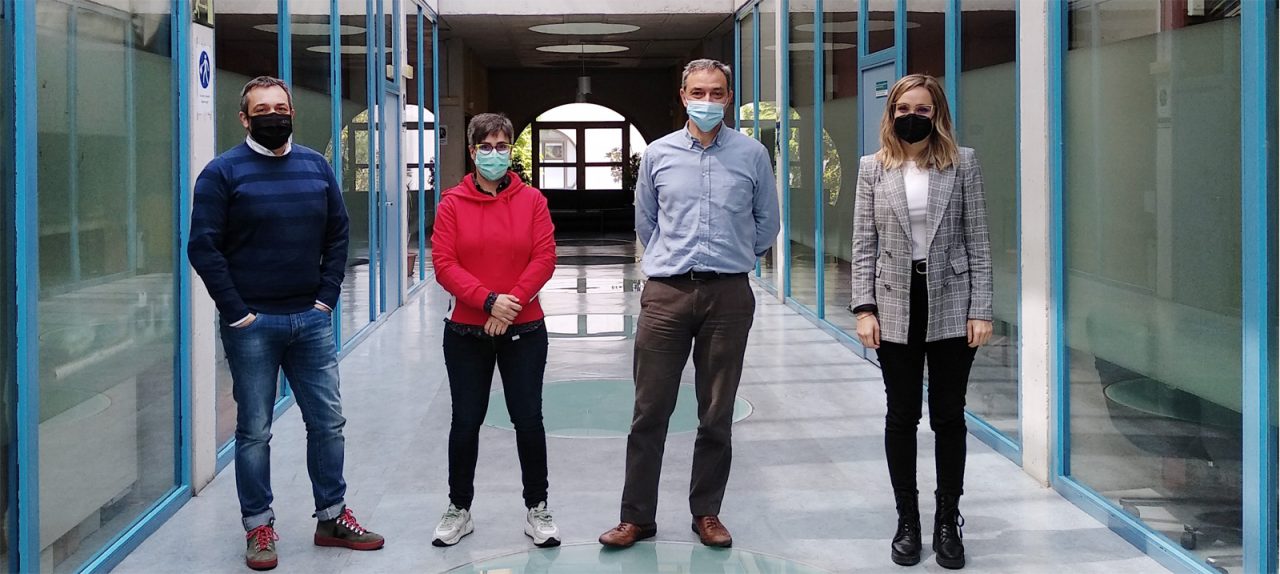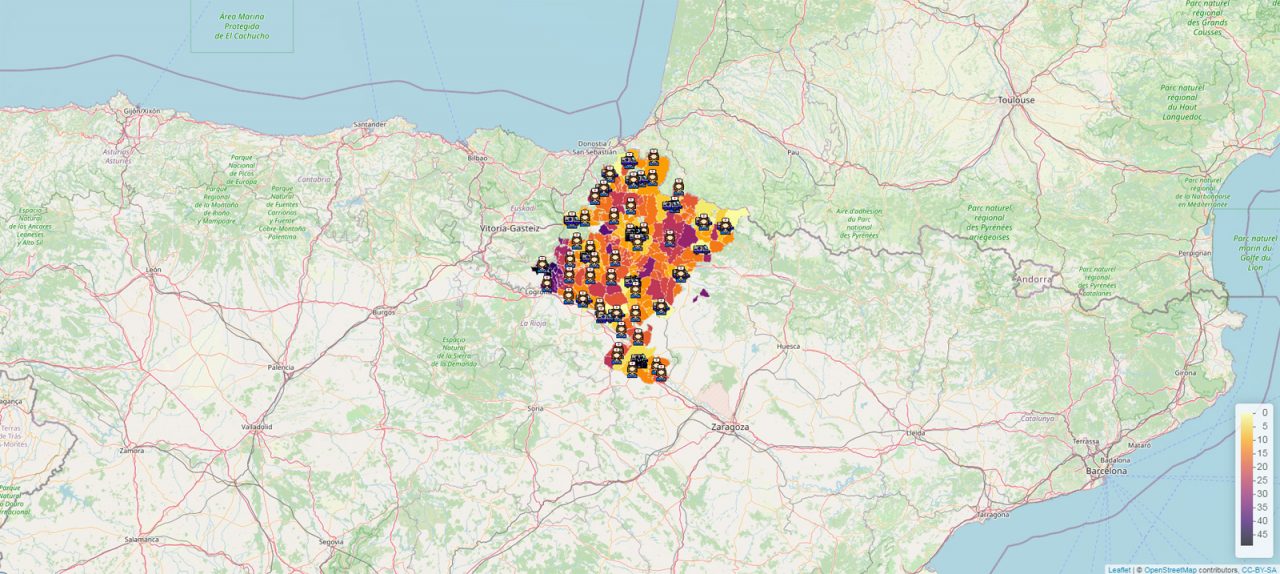The initiative forms part of Action 3 of the EGALURG network’s work plan and focuses on creating and testing cross-border healthcare protocols individually and as a group.

The Quantitative Methods for Uplifting the Performance of Health Services (q-UPHS) research group at the Universidad Pública de Navarra (UPNA) is developing a map of the healthcare resources in the cross-border area of the Pyrenees to facilitate logistics decision-making in emergency situations. This tool, developed within the framework of the EGALURG cooperation network through partner organization Navarrabiomed (Navarre), will be of great use when organizing medical equipment for major events.
The map currently contains the resources in Navarre and will be completed with the resources in the other cross-border regions during 2021. It is in the early stages of compiling and displaying the healthcare resources available for handling healthcare emergencies. The map shows the emergency resources in different layers: “Ambulancias_SVB” (Basic Life Support Ambulances), “Ambulancias_SVA” (Advanced Life Support Ambulances), “Hospitales”, “Servicios_Urgencias” (Emergency Services) and “PAC” (Continuous Care Centers). It also indicates the average travel time from each town to the nearest facility in the same region.

“When the resources of the other cross-border regions are added, we’ll be able to assess the benefits of sharing healthcare resources. The map will be used to perform technical and logistics checks on the preparation and readiness of the different resources in each region in order to provide full coverage by completing and correcting any deficiencies detected,” explained Marta Cildoz Esquíroz, a UPNA researcher and professor and a member of the EGALURG network through Navarrabiomed.
Fermín Mallor Giménez is a UPNA professor of Statistics and Operations Research who participated with the work group on the map’s design. He said, “It’s important to design the product with features that make it useful and easy to update, because the situation with healthcare resources is constantly changing.” This tool will be used mainly by healthcare decision-makers in emergency situations and when organizing events, though it may be helpful in other contexts. He continued, “It could be used by local authorities in rural areas to provide information on the healthcare resources available in the area.”
In medical emergency situations, every minute is vital. How fast healthcare equipment can reach the site of the emergency is particularly important. The application being developed by the researchers could lead to changes in the distribution of medical units. Mallor explained, “The people responsible for managing resources will know which regions are less prepared. If the response time in one place is 38 minutes and we want to establish a policy in which it must be less than 30, the map can provide an idea of where a new resource should be located.” The aim is to facilitate strategic and tactical decision-making on changes with long-lasting effects, “such as building an ambulance center in one place, acquiring new mobile units or ambulances, and expanding a work shift by including more professionals,” Mallor said.
To create the map, the research group accessed public databases. According to Martín Gastón Romeo, a university professor and researcher in the q-UPHS group, the map makes use of the information provided by partner members, as well as geographic data. “The Government of Navarre makes layers of accessible information available and we hope to find similar data in other cross-border regions that can be added to the map.” The group also uses the Open Street Map app for travel time and distance calculations. “We’re including all these data so they form part of the map and make it a very complete tool that can be used for sound decision-making,” said Gastón.

This activity forms part of the EGALURG network’s Action 3, which is led by the Hospital Center of the Basque Coast (Nouvelle-Aquitaine) with the cooperation of the network’s other partner organizations: Toulouse University Hospital (Occitanie), Navarrabiomed and the Emergency Medical Services of Catalonia. The goal of the European network is to promote equal access to emergency and disaster healthcare in isolated communities on both sides of the Pyrenees.
Simulation and prediction systems
The q-UPHS is a consolidated research group that works closely with the Navarre Health Service. Its mission is to respond to logistics-related problems of all kinds in healthcare. Besides its many projects, the group is providing basic support in the COVID-19 health crisis by drawing up simulation models for predicting the need for resources. “Since March 2020, we’ve been writing reports for the Government of Navarre on predictions of what is needed in terms of beds, hospitals and ICUs”, said Mallor. The group also monitors new cases in an attempt to anticipate new outbreaks of the virus. The research group recently collaborated with the Spanish Ministry of Health to predict the number of ICU beds required in each Spanish autonomous community.
Besides working on the pandemic, the group has created other useful projects to optimize healthcare operations, including systems for improving patient flows in emergencies and triage processes by providing efficient ways of prioritizing patients, assigning resources in each case and reducing waiting times.
The EGALURG Project is co-funded (65%) by the European Regional Development Fund (ERDF) through the Interreg V-A Spain-France-Andorra Program (POCTEFA 2014-2020). The goal of the POCTEFA program is to strengthen the economic and social integration of the Spain-France-Andorra cross-border area. Its help is focused on developing cross-border economic, social and environmental projects through joint strategies in favor of sustainable regional development.
